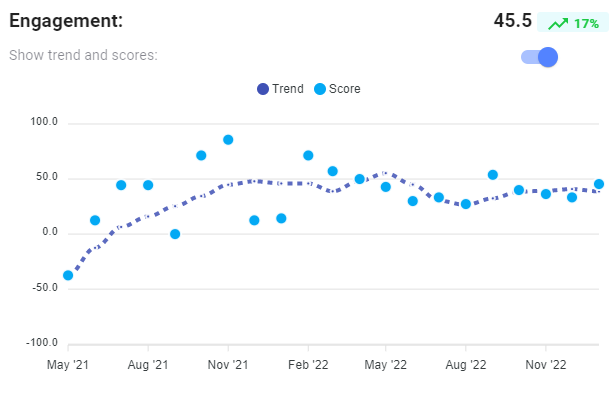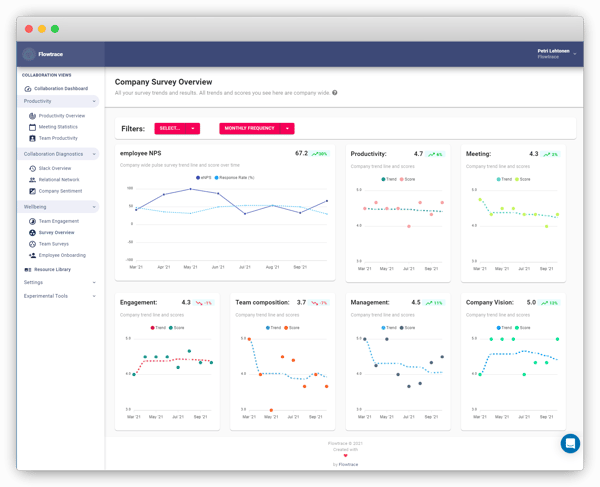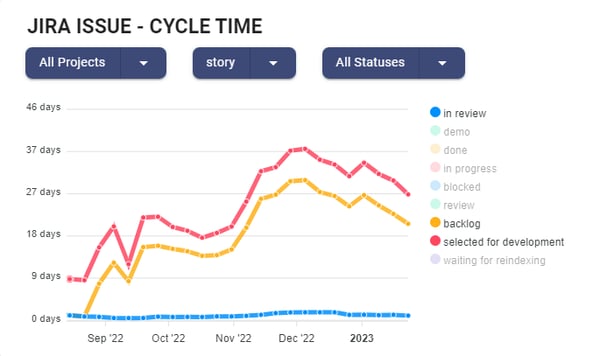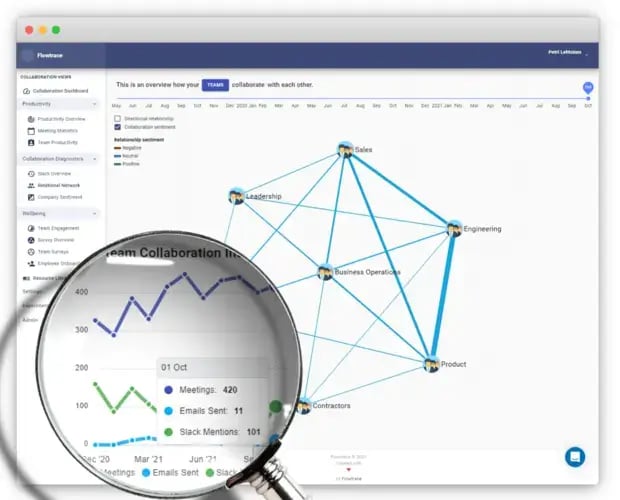The modern workplace is undergoing a major transformation, with remote teams, new technologies, and changing work cultures becoming the norm. As organizations seek to remain competitive and adapt to these changes, they need to have a clear understanding of their productivity, communication, collaboration, and engagement metrics. However, many organizations struggle to measure these subjective topics in a factual manner, leaving them in the dark about their internal workings.
Enter the SPACE framework. Developed by Nicole Forsgren, a member of the DORA team and a co-author of the book Accelerate, SPACE provides a way to think rationally about workplace productivity culture and offers a more complete and nuanced picture of workplace performance. It combines much of the latest research on development productivity under a single framework and lists the five most important dimensions of workplace productivity (Satisfaction & Well-being, Performance, Activity, Communication & Collaboration, Efficiency & Flow) at three different organizational levels (individual, team, and system).
By using the SPACE framework, organizations can gain a 360-view into their business, discover their strengths and weaknesses, and prioritize the aspects of their internal operations that need improvement. With the help of Flowtrace, companies can measure and analyze these metrics, creating insights, recommendations, and dashboards for their leadership teams, employees, and managers.
In this article, we will explore the SPACE framework in detail, its applications to the modern workplace, and the benefits it brings to organizations. Whether you are a leadership team member, a C-level executive, or someone who works in the tech industry, this article will provide you with a clear understanding of the SPACE framework and its potential to improve your workplace.

Understanding the Dimensions of the SPACE Framework
The SPACE framework is a comprehensive way to understand and measure developer productivity. It is based on the latest research in the field, and it goes beyond traditional metrics to provide a more complete and nuanced picture of developer productivity. We are extending the framwork to be applicable across the whole company.
The framework consists of five main dimensions, each of which can be measured at the team, and system levels. These dimensions are:
-
Satisfaction & Well-being: This dimension of the SPACE framework looks at how satisfied teams are with their work and their overall well-being. It includes metrics like job satisfaction, burnout, and work-life balance.
-
Performance: This dimension measures the actual performance of teams in terms of quality, speed, and outcomes. It includes metrics like time to delivery, number of deals closed, customer satisfaction and features released.
-
Activity: This dimension measures the amount of work that teams are doing, including the number of tasks completed, sales calls done, hours worked, and the type of work being done.
-
Communication & Collaboration: This dimension measures how effectively teams are communicating and collaborating with one another. It includes metrics like the number of team meetings, the frequency of code reviews, and the number of bug reports submitted.
-
Efficiency & Flow: This dimension measures how efficiently your teams are working, including how they are using their time and resources. It includes metrics like the time spent in meetings, the time spent multitasking, and the number of context switches.
In this chapter, we took a closer look of the SPACE framework, exploring what the acronym stands for and what they measure. We will also discuss the importance of considering each dimension at the team, and system levels, and the benefits of doing so.
Applying the SPACE Framework to Measure Workplace Culture

How to implement the SPACE framework at an company level
Implementing the SPACE framework at an organizational level is a multi-step process that starts with understanding the different dimensions of productivity. The five dimensions of the SPACE framework include Satisfaction & Well-being, Performance, Activity, Communication & Collaboration, and Efficiency & Flow.
Once you have a clear understanding of the SPACE framework, you can then begin to gather data on your workplace culture. This can be done through employee surveys, focus groups, and other forms of qualitative data collection. It is also important to gather quantitative data such as work processes, communication patterns, and performance metrics.
Once you have collected your data, you can then start to analyze it to identify areas for improvement. For example, if you find that your team is not collaborating effectively, you may want to focus on improving communication and collaboration within your organization.
Examples of how companies have used the SPACE framework to measure their workplace culture
Many organizations have used the SPACE framework to measure their workplace culture with great success. One example is a technology company that used the SPACE framework to analyze their work processes, communication patterns, and performance metrics. They found that their teams were not communicating effectively, which was leading to missed deadlines and a lack of cohesion.
To address this issue, the company made changes to their communication processes, including implementing regular check-ins and team-building activities. As a result, they saw a significant improvement in their communication and collaboration, leading to increased productivity and job satisfaction among employees.

Another example is a consulting firm that used the SPACE framework to measure the satisfaction and well-being of their employees. They found that many employees were feeling stressed and overworked, which was impacting their performance and productivity.
To address this issue, the company made changes to their work processes and implemented a flexible work schedule, allowing employees to work from home when needed. This helped to reduce stress levels and improve job satisfaction among employees.
Benefits of using the SPACE framework to measure workplace culture
The SPACE framework provides a comprehensive view of workplace culture and helps organizations identify areas for improvement. By measuring satisfaction and well-being, performance, activity, communication and collaboration, and efficiency and flow, organizations can gain a deeper understanding of the relationships and processes that drive their workplace culture.
Using the SPACE framework to measure workplace culture also allows organizations to prioritize their efforts and make data-driven decisions. For example, if the data shows that communication and collaboration is a key area for improvement, the organization can focus on implementing strategies to improve this aspect of their workplace culture.
In conclusion, using the SPACE framework to measure workplace culture can lead to improved productivity, increased job satisfaction, and a more positive workplace culture overall.
Using Flowtrace Metrics for SPACE Framework
Flowtrace is a company analytics platform that provides a 360-degree view into a business's internal workings. By analyzing workplace apps and tools, Flowtrace creates insights, metrics, and recommendations for leadership teams, employees, and managers on how to improve the way they work. With a focus on productivity, communication, collaboration, and engagement, Flowtrace provides metrics and insights to help organizations prioritize and tackle the areas of their business that need improvement.
The SPACE framework provides a comprehensive view of productivity, including satisfaction and well-being, performance, activity, communication and collaboration, and efficiency and flow. Flowtrace leverages its advanced analytics capabilities to help organizations measure and improve these important dimensions of productivity. Here's an example of how 4 of 5 categories are covered by the core features:
Satisfaction & Well-being: Flowtrace provides insights into the satisfaction and well-being of employees through weekly surveys. This information helps organizations understand the pulse of their team, identify areas of concern, and take action to improve employee satisfaction and well-being. With Flowtrace, organizations have the data they need to make informed decisions and create a happier, more productive workplace.

Performance: Flowtrace helps organizations measure the efficiency of their core processes, including cycle times for engineering, deal pipeline progression, and customer support response times. This information can be used to identify areas for improvement and drive process efficiency, ultimately leading to better performance.

Communication and Collaboration: Flowtrace provides insights into team relationships and collaboration patterns, allowing organizations to see how their teams are working together and identify areas for improvement. By mapping team relationships and collaboration patterns, Flowtrace helps organizations better understand the impact of their communication and collaboration efforts on productivity.

Efficiency and Flow: Flowtrace helps organizations measure the health of their meetings and multitasking, as well as the flow of information within the team. This information is critical to understanding how well teams are working together and can be used to make data-driven improvements to their processes.
.webp?width=1629&height=1001&name=magnifyingglassproductivity-2%20(3).webp)
Conclusions: SPACE Framework
Measuring workplace culture is crucial for improving the overall success of an organization. The SPACE framework provides a scientific and research-backed approach to doing so, giving leadership teams the ability to prioritize the aspects of their internal business that need the most attention. Implementing the SPACE framework can lead to increased productivity, improved meeting efficiency, better collaboration, and a more engaged workforce.
We have also shown how our clients use Flowtrace to measure 4 out of 5 categories of the framework. If you are a leader in the tech industry or a C-level executive, now is the time to take advantage of the SPACE framework.
By using a data-driven approach to measuring workplace culture, you can make informed decisions and take your organization to the next level. So, start using the SPACE framework today and reap the benefits of a more productive, satisfied, and engaged workforce.
